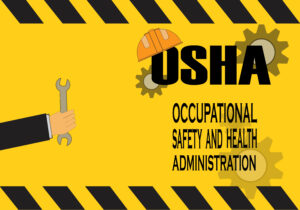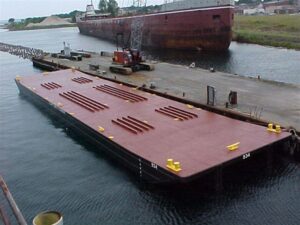
It’s not surprising that OSHA has quite a bit to say about safety conditions on barges. The use of a maritime gangway and barges cross over into many industries and any operation that involves loading and unloading in a maritime environment will at some time have a barge in the mix.
Essentially, barges are large floating work platforms. They are used extensively in maritime construction projects that involve dredging and pile driving and in maritime cargo operations.
The need for excellent fall protection is essential on barges as well as the need to safely cross from a barge to a ship or a dock because trips, slips, and falls are the major causes of injuries in the maritime environment.
Surfaces on barges are wet and slippery.
Moving equipment, a rising and falling barge, improper footwear, loud noise, and improper fall protection procedures all contribute to the potential for falls, slips, and trips.
There are also injuries due to falls from stairs, ladders, onboard equipment and falls through holes on the deck or an uncovered hatch.
Elevated falls can happen on stairs, equipment, ladders, and holes in decks, and uncovered hatches.
An immediate safety solution that should be put in place is an industrial-grade maritime gangway to allow safe passage from the barge to the dock or another ship.

- Use a modern industrial-grade maritime gangway is usually made from high-grade metal or aluminum with a non-slip surface that is built into it. These gangways are corrosion resistant and they usually have safety handrails that create a safe crossover.
- Work boots that are waterproof and have a deep non-slip sole work best on wet surfaces. When on a barge OSHA recommends…
- Walk at normal speed, keep your hands out of your pockets and slow down when moving onto a different surface. Do not run, or make sharp turns and minimize stopping short.
- Walk with even more care when on an icy deck. Look ahead as you step. Avoid the temptation to jump from one barge to another. Use a marine gangway with safety handrails.
- If you need to get to the top of an on-deck cargo load use a ladder with firm support.
- Avoid stepping on hatch covers.
- Do not walk at the edge of the deck if the barge does not safety handrails. Safety barriers should be in place.
- In situations where there is reduced visibility add more illumination. Wearing a safety headlamp is a good idea.
All of these OSHA suggestions are good common sense and careful attention to all the details is in your best interest when working in a maritime environment or on any maritime gangway.
Saferack cares about your employees and your company. A Saferack Maritime Gangway gives your employees the safety they need when crossing from a dock to a barge or a ship. Call Saferack today and allow us to show you the safety steps your company should take if it engages in maritime loading and unloading. Call Saferack Today.























